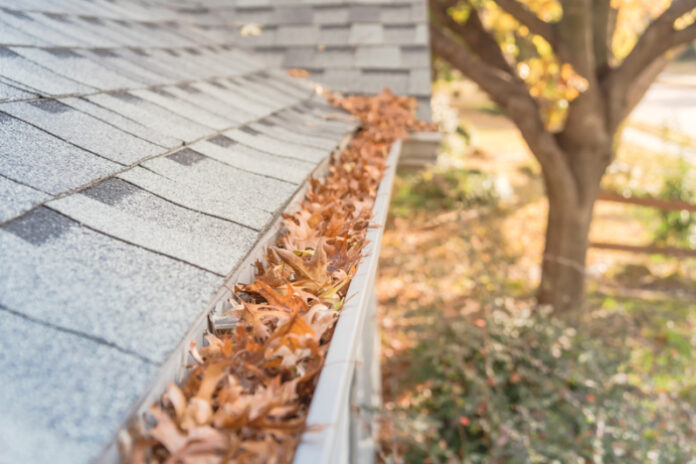
A roof is a home’s first line of defense against the elements, shielding its inhabitants and contents from the often unpredictable and harsh forces of nature. In a city like Austin, Texas where weather patterns can swing from intense heat and sun to torrential rain, hail, and even the occasional winter storm, understanding how these conditions impact your Austin residential roofing is important for protecting your investment and ensuring your home remains a haven. This article aims to shed light on the effects of Austin’s unique climate on your roof and provide valuable insights into how to safeguard it against wear and tear, ultimately extending its lifespan and preventing costly damage.
Roof Repair or Replace? Homeowners’ Dilemma After a Hailstorm
Austin’s climate, known for its scorching summers, sudden storms, and occasional hail, presents a unique set of challenges for residential roofs, making roof leak repair Dallas TX a common need for homeowners. The relentless sun and heat accelerate the aging of roofing materials, causing them to become brittle and susceptible to damage. Prolonged exposure to ultraviolet radiation can lead to fading and cracking, compromising the roof’s protective barrier.
Hailstorms, though less frequent, can wreak havoc on Austin residential roofing. Hailstones, varying in size from pebbles to golf balls, can dent and puncture shingles, leaving the roof vulnerable to leaks and further deterioration. While snow and ice are less common in Austin, they can still pose risks during colder months, particularly by causing ice dams that prevent proper water drainage and lead to potential damage.
Understanding these diverse weather threats is crucial for homeowners in Austin, as it enables them to take proactive measures to safeguard their roofs. By choosing suitable materials, ensuring proper installation and maintenance, and implementing preventive measures, residents can mitigate the impact of weather and ensure the longevity of their Austin residential roofing systems.
The Unseen Damage: How Weather Silently Ruins Your Roof and the Fix
In regions like Irving, where weather patterns can be unpredictable and often harsh, residential roofs face a barrage of threats from the elements. The intense sun and heat accelerate the deterioration of roofing materials, leading to compromised integrity and a shortened lifespan. Prolonged exposure to ultraviolet radiation can cause fading, cracking, and brittleness, leaving the roof vulnerable to further damage.
Heavy rainfall, which can occur suddenly and in large amounts, presents another significant challenge. Excessive moisture can overwhelm a roof’s defenses, resulting in leaks, water infiltration, and the growth of mold and rot. These issues not only compromise the aesthetic appeal of the home but also pose serious risks to its structural integrity.
High winds, often accompanying storms, can exert tremendous force on residential roofs, leading to lifted shingles, damaged flashing, and even structural failures. Hail, although less frequent, can inflict significant damage, leaving behind dents, punctures, and compromised waterproofing. In colder climates, the accumulation of snow and ice can overload the roof, leading to collapses, or create ice dams that impede proper water drainage and cause leaks.
Given the vulnerability of residential roofs to these various weather-related hazards, homeowners in areas like Irving must be proactive in safeguarding their properties. Investing in roof replacement Irving can be a prudent decision, ensuring the installation of materials that are better equipped to withstand the local climate and its unique challenges. Additionally, regular inspections and maintenance can help identify and address potential issues before they escalate into major problems, ultimately saving homeowners time, money, and stress.
Weatherproofing Your Roof: Beyond Just Shingles and Nails
Shielding a roof from weather damage requires a multi-faceted approach. Selecting appropriate roofing materials is paramount, as different climates necessitate different solutions. In areas prone to hailstorms, impact-resistant shingles can minimize the risk of damage, while metal roofs offer exceptional longevity and fire resistance. For regions with extreme heat, slate or tile roofs might be preferable due to their durability and heat-reflecting properties.
However, even the most robust materials can fail if not installed correctly. Engaging the services of a professional roofing contractor is crucial to ensure proper installation, as even minor errors can have significant consequences down the line. Regular maintenance is equally important, as it allows for the early detection and repair of potential issues. Inspecting and cleaning gutters regularly helps prevent clogs, which can lead to water damage, while timely repairs of damaged shingles and flashing are essential for maintaining the roof’s protective barrier.
Beyond material selection and maintenance, additional protective measures can further enhance a roof’s resilience to weather. Roof coatings, for example, can provide an extra layer of protection against UV radiation and help reflect heat away from the structure. Ice and water shields can prevent ice dams in colder climates, while proper attic ventilation helps regulate temperature and moisture levels, minimizing the risk of mold and rot.
From Deductibles to Depreciation: Making Sense of Roof Insurance Jargon
Homeowner’s insurance can be a vital safeguard in the face of roof damage, but understanding the nuances of coverage is key. Policies vary in the perils they cover, from windstorms to hail, and may have exclusions or limitations. Familiarizing oneself with these details empowers homeowners to make informed decisions about repairs and replacements, avoiding unexpected financial burdens.
Should roof damage occur, meticulous documentation is crucial. Photographs, videos, and detailed descriptions aid in the claims process, as do repair estimates from reputable contractors. Open communication with insurance adjusters, including asking questions and promptly providing information, facilitates a smoother experience.
Conclusion
In conclusion, safeguarding a roof from the elements is a multifaceted endeavor. Choosing suitable materials, ensuring proper installation, and maintaining the roof diligently are all critical steps in preserving its integrity and extending its lifespan. Homeowners can further fortify their roofs against weather-related damage by implementing additional protective measures such as roof coatings, ice and water shields, and proper attic ventilation with the help of experienced New Braunfels roofers.
Find a Home-Based Business to Start-Up >>> Hundreds of Business Listings.














































